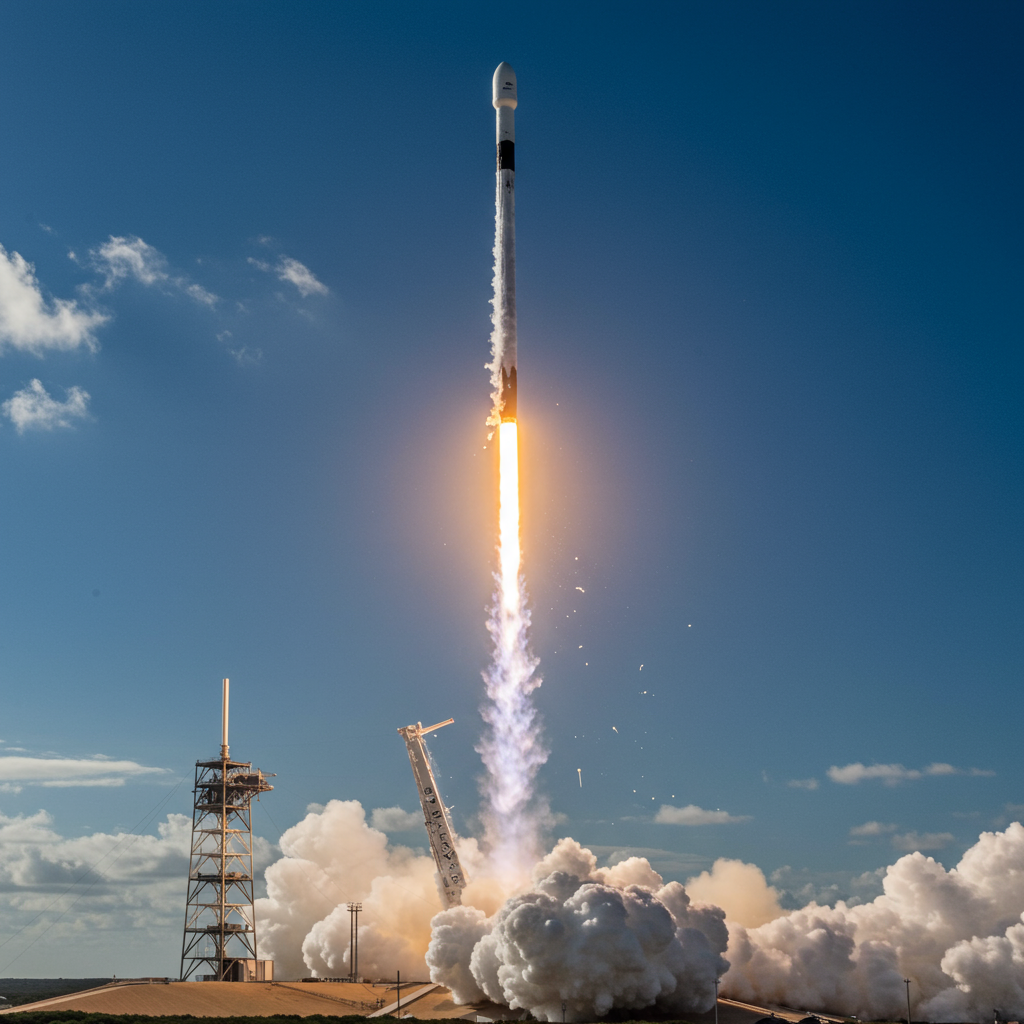SpaceX Accelerates Starlink Rollout with Latest Florida Launch
SpaceX continues its rapid expansion of the Starlink satellite internet constellation with another successful launch from Florida. On Friday, June 13, 2025, a Falcon 9 rocket lifted off, carrying 23 Starlink satellites into low Earth orbit, further bolstering the global broadband network.
This mission highlights SpaceX’s aggressive deployment pace, occurring less than a day after a previous Starlink launch from California. The swift turnaround between missions underscores the company’s advanced operational efficiency in deploying its satellite constellation.
Key Launch Details
The Falcon 9 rocket successfully launched at 11:29 a.m. EDT (1529 GMT) from Space Launch Complex 40 (SLC-40) at Cape Canaveral Space Force Station in Florida.
Among the 23 satellites on board, 13 are equipped with SpaceX’s cutting-edge Direct to Cell capability. This technology marks a significant step in global connectivity.
Following stage separation, the Falcon 9’s first stage booster, designated B1078, completed its impressive 21st flight. This achievement demonstrates the remarkable reusability of SpaceX’s rockets. The booster executed a successful landing on the autonomous droneship “A Shortfall of Gravitas” stationed in the Atlantic Ocean.
The Falcon 9’s second stage continued its ascent, placing the satellites into their initial orbit approximately an hour and five minutes after liftoff. These satellites, part of the Group 12-26 deployment, will integrate into the vast Starlink network once operational.
Boosting Direct-to-Cell Connectivity
The inclusion of 13 satellites with Direct to Cell technology significantly enhances Starlink’s capability to provide connectivity directly to compatible smartphones and select service providers’ networks. This feature is particularly transformative for eliminating cellular dead zones, enabling internet access in remote or underserved locations without the need for traditional ground infrastructure.
SpaceX has been actively building out this specific capability, with the first orbital shell for Direct to Cell connectivity reportedly completed in late 2024. Partnerships, such as the one with T-Mobile in the U.S., aim to leverage this space-based solution to provide seamless connectivity even in challenging terrains. The ongoing deployment of these specialized satellites is crucial for realizing the vision of widespread mobile connectivity from space.
Starlink Constellation Growth in 2025
This launch from Florida represents SpaceX’s 73rd Falcon 9 mission conducted in 2025 alone. A substantial majority of these flights, 55 missions to date, have been dedicated to deploying Starlink satellites, illustrating the priority placed on expanding the internet service.
The mission immediately followed a Starlink launch from California the previous evening, which notably marked the 500th overall completed mission for SpaceX’s Falcon rocket family – a major milestone in reusable rocket technology. With the addition of these 23 satellites, the Starlink megaconstellation now totals over 7,600 units in orbit, forming the largest satellite network ever assembled and providing high-speed broadband internet coverage across the globe.
SpaceX’s relentless launch cadence and focus on advanced capabilities like Direct to Cell are rapidly transforming the landscape of global internet accessibility.




